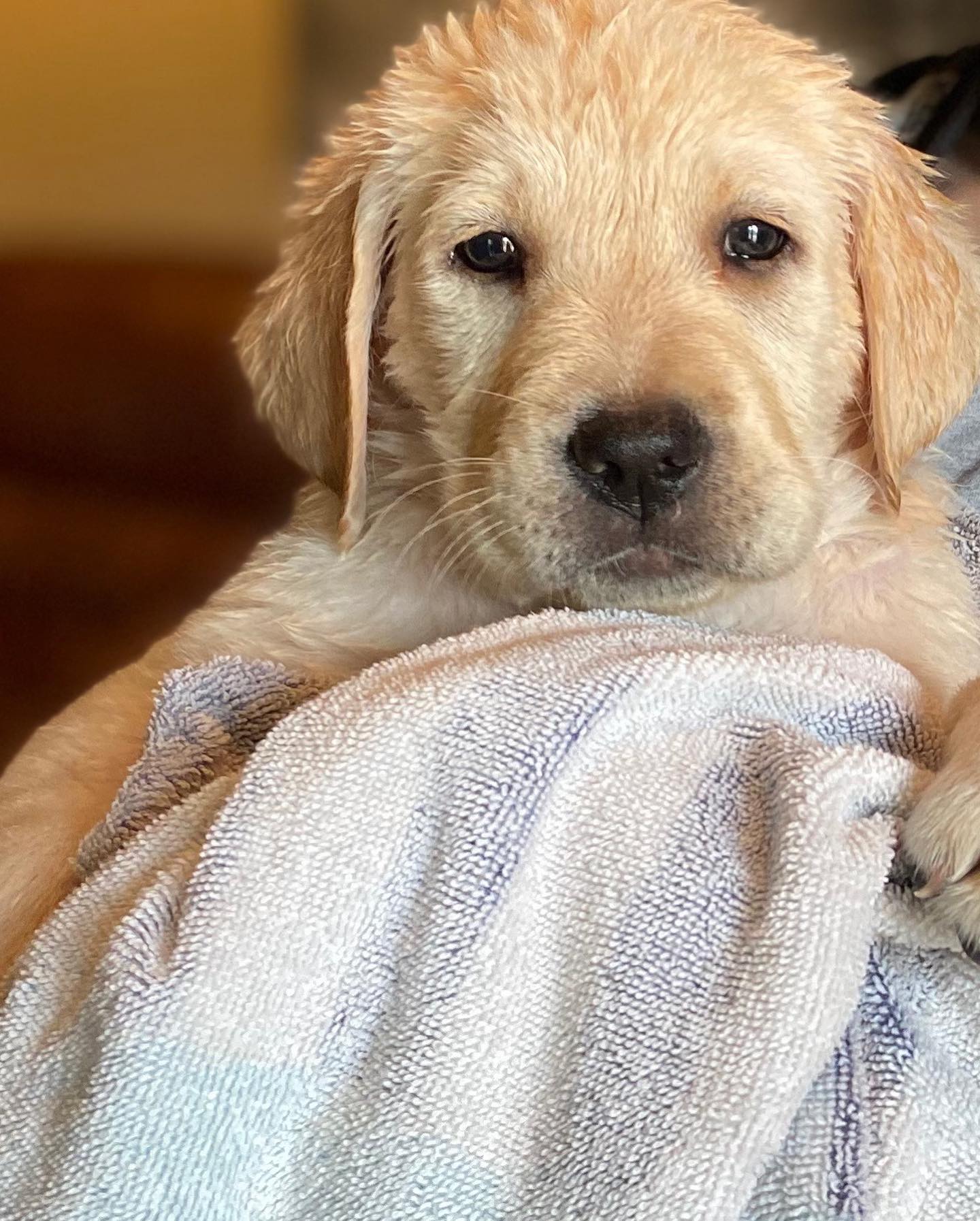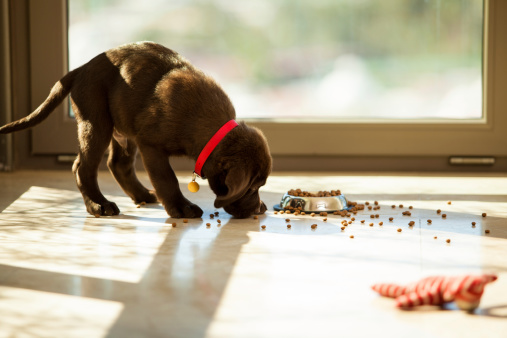Hip and Elbow Dysplasia in your Labrador

Jump to contents:
Hip and Elbow Dysplasia is believed to be the greatest single orthopedic risk to retrievers. It causes pain, lack of motion, depression and eventually, immobility. So, what can you do about it?
As a breeder, one of the most important things that I can understand is the disease and health risks of my breed – The Amazing Labrador retriever. While I do not claim to be a veterinarian, nor does my advice and insight here in any way intend to erase the need for a good veterinarian, I will pass along what I have learned and hope that it is helpful to you.
Hip and Elbow Dysplasia is most easily understood as an ill-fitting bone and socket causing restricted motion and pain. If the bone cannot properly rotate, the pup is going to be reluctant to move. Hip Dysplasia is slightly different from Elbow Dysplasia, but both have similar outcomes.
“A dysplastic hip or elbow does not flex, extend, or rotate as smoothly as it should, which results in joint inflammation and pain. Over time, abnormal bony deposits form around the affected joint(s) resulting in secondary osteoarthritis. Some dogs suffer from dysplasia of multiple elbow and/or hip joints.”
This is believed to be a multi-factored disease, whose factors come together to create the pain described. The factors are:
- Genetic Health
- Larger Size
- Rapid Growth
- diets that are too rich in calories, fat and calcium
Let’s go through each in relation to Hip Dysplasia and Elbow Dysplasia and review a things we can do to help.
Genetic Health
As any good breeder should, I take hip and elbow dysplasia very seriously. There are a number of ways that Hip and Elbow Dysplasia are “graded” or “scored”. The most common way in the US is through OFA – The Orthopedic Foundation for Animals. OFA grades using common words, rating from Excellent down to Severe. There are 7 categories in all.
Our overseas kennels have a different scoring system, offering a 0-3 Dysplasia grade and a A-D Dysplasia grade for hips and elbows, respectively. (0 and A are the best, meaning no signs of any dysplasia.)
We look for healthy hips and elbows for at least two generations, not using a dog as a breeding dog that has a 2 or 3 or c or d score in their previous two generations. We also look at the other dogs in the program and lineage to help us determine the risks to our puppies.
Europe and various American institutions are beginning more and more to use a different type of scoring – the EBV scoring method. We hope to have more information about that in the future, and hope to switch our dogs over to that as the system becomes more readily available.
Larger Size
Well, not much we can do about that one from a genetic standpoint. Retrievers are at risk for this because they are a larger breed, which makes it a risk factor. What we CAN do is be sure to keep their weight under control and keep them healthy and exercising in the right amounts through their lives. A large breed dog who is carrying an extra 25 pounds is far more likely to have hip, elbow and general joint issues throughout their lives.
What…. what was that about exercise?
Remember: Puppies are not to have rigorous exercise beyond 5 minutes per month of life. (A two month old puppy can rigorously exercise for 10 minutes without a break, and a 5 month old for 25 minutes, etc.) Romping with you in the grass is not rigorous exercise. We are talking long walks, hiking, climbing, water swimming, etc. where there is no break. PUPPIES SHOULD NOT HIKE. They also should jump off of couches or higher places until they are grown. Remember, these are toddlers! Protect those knees!
BUT…. the problem is…. that adult labradors can get lazy in their age and so can their owners. A dog who lazes around mostly sleeping and resting all day will have weakened muscles, leaving more of the strain on the joints to get the dog where it wants to go. Protect those bodies! Keep that dog a run-in! 🙂
Rapid Growth/Diet
It is essential that you provide your pup with a high quality puppy food, preferably one made for Large Breeds. Large Breed Puppy food has a different caloric density as well as calcium and fat contents which are best suited for retrievers. Too many calories, or too much calcium and fat is proven to increase risks for Dysplasia. Don’t give in to those Puppy Dog Eyes! They aren’t as hungry as they look. 🙂
Interested in more info? Check these Helpful Links!
Scientific studies by PLOS on Dysplasia
Vet Depot on Hip/Elbow Dysplasia
Cornell Hip/Elbow Dysplasia info
Until next time!

